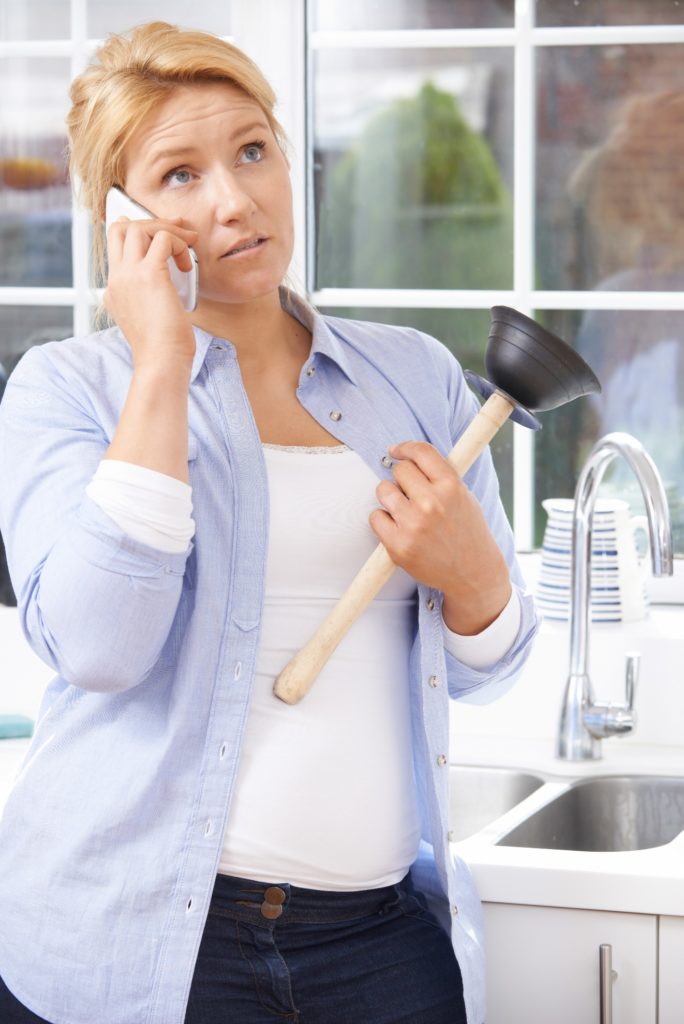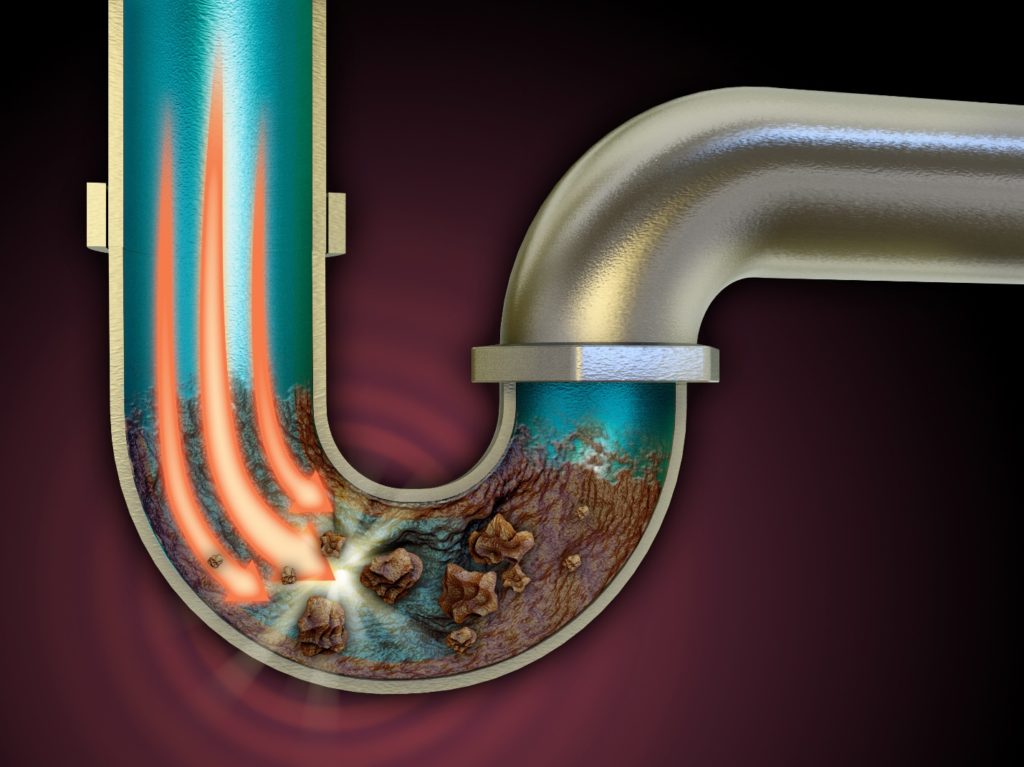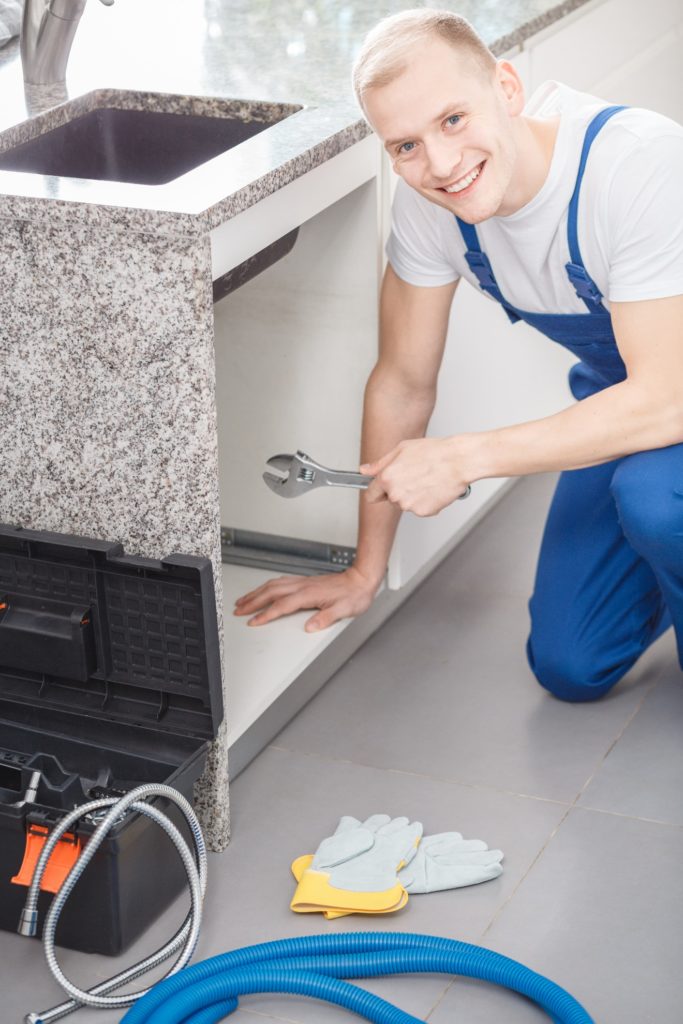Clogged Drainage System or Sewer Line? It’s Time to Call the Experts
Dealing with a clogged drainage system or sewer line can be quite challenging. It is not uncommon to think you fixed the cause of the problem, only to have it return a short time later. The reason these types of plumbing problems can be difficult is that there can be one or more underlying causes of the problem in the first place.
Fixing one of the problems will not fix other drainage and clogging issues. Eventually, what you did will pale in comparison, especially if there is a major clog. You could wake up to discover water flowing over the toilet seat, sink drains backed up, or raw sewage oozing up the floor drains in the basement. At this point, you will want to pick up the phone and call a professional plumber for help.

How Your Home’s Drainage System and Sewer Lines Work
There are a series of drain pipes that are inside the walls and floors of your home. Each drain pipe is connected on one end to a different fixture, such as:
- Toilets
- Sinks
- Bathtubs
- Showers
- Laundry Tubs
- Dishwasher
- Washing Machine
The other end of the drain pipe is connected to your home’s main sewer drainage line. Each drain line and the main sewer line are also connected to various vent pipes. You may have noticed these sticking out of your roof, especially in areas near bathrooms. The vents allow sewer gases and foul smells to escape, rather than waft back up the drain lines and into the home.
The main sewer drainage line runs from the home, outside, and is connected to your city’s sewer system or into your septic tank. Keep in mind, this is just a general overview of most home’s drainage system lines. Some homes have dual systems, where one drain line is for raw sewage and the other for gray water.
When you run water or flush the toilet, the water and any objects run down the drain line and into the main sewer drainage line. From there, it flows out of the house and into the city’s sewer system or your septic tank.
What Happens When There Is a Clog?
If a drainage problem occurs, it often means there is a blockage somewhere within the series of drain pipes that can affect how water drains and where it goes. For instance, if there is a major blockage in the primary sewer drain line just before it exits out of the house, it could cause water and raw sewage to back up all of the drains in the home on the lower floor.
If the clog is somewhere else, like at the location where the drain line connects to the main sewer line, then anything coming down drain lines and into the sewer line, prior to this blockage, could be rerouted back up that drain line.
To illustrate this type of clog, consider there is a sink, toilet, and shower connected to the main sewer line. The sink’s and toilet’s drain lines come before the shower’s drain line. A clog forms in the main sewer line just past where the shower drain line connects. If you turn on the sink faucets or flush the toilet, water and waste could flow back up the shower’s drain.
Signs of Clogged Drains and Sewer Lines
There are several warning signs you will notice when clogs are starting to form in drain lines and the primary sewer line. Learning to recognize these signs can mean the difference between having the drain lines cleaned and experiencing a serious clog with raw sewage and waste coming back up the drains.

- Slow-Draining Water: This is a sign a clog has started to form and has not yet become a major problem.
- Gurgling Sounds from Other Drains: If you hear this sound, it means there is a clog somewhere in one or more drain lines. Water cannot drain correctly, so it creates air bubbles.
- Water Coming Up Drains: This is an indication there is a clog in the sewer line that is not allowing all the water or waste to flow out of the home.
- Wet Areas Outside the Home: If you notice your grass is constantly wet, even when it is dry outside, this means water could be coming out of sewer line access pipes or the sewer line is broken.
- Pooling Water in the Basement or Main Floor: If you notice water pooling in the basement, it could be coming up from floor drains. This often indicates the blockage is in the main sewer line.
- Foul Smells Coming from the Drains: This indicates there is a blockage in the drain or sewer line where sewer gases are not venting correctly.
How to Determine the Source of the Clog
Based on the symptoms, it is possible to determine where the clog could be located within the drain lines or main sewer line. Normally, if there is just one drain that drains slowly or not at all, it means the clog is somewhere in that particular line.
On the other hand, if you notice several drains are draining slowly or water is flowing back up multiple drains when you run water someplace else or flush the toilet, then the clog is probably located in the main sewer drainage line. The location of the clog within the line will depend on which drains are experiencing problems.
Common Causes of Drainage System and Sewer Line Clogs
There can be all sorts of things that can cause clogs in drain and sewer lines. There really is no easy way to tell what is causing the clog until after you have drain cleaning and clog removal service performed by your local plumber. Keeping this in mind, the source of the clog could be caused by:
- Grease
- Hair
- Soap
- Detergents
- Lint from Clothing
- Food
- Excessive Toilet Paper Usage
- Flushing Items You Should Not (Paper Towels, Sanitary Napkins, Tampons, etc.)
- Kids’ Toys
- Jewelry
Why Hire a Professional for Drain Cleaning and Clog Removal?

Since there can be more than one reason for a clogged drainage or sewer line, it can be difficult to troubleshoot and find the source of the problems on your own. Let’s assume you have multiple problems, where there are a few different minor clogs in drain lines prior to flowing into the main sewer line and blockages forming both in the main sewer line inside the home and outside the home.
You might use a plunger to clear out the clogs in the drain line. Yet, removing the blockages in the main sewer line requires more than a plunger. Since only part of the problem was fixed, the other blockages will still cause drainage system issues.
This is why you want to hire a professional plumber for drain cleaning and clog removal service. Having your drainage and sewer lines cleaned not only gets rid of the clog but also removes any buildup on the inside walls of the pipes, like soap, hair, or grease.
In some cases, the cause of the clog could be from tree roots that have grown into and through sewer drain lines outside the home. If this happens, then fixing the problem requires digging up the yard and replacing the damaged sewer lines with new ones. As you can imagine, this type of work can be rather messy and can be stinky since there is raw sewage involved.
If you are having problems with slow-draining drains, stopped up drains, clogs in sewer lines, or other plumbing problems, please feel free to contact your nearest Christianson Air Conditioning & Plumbing location in San Antonio, Austin, New Braunfels, or Temple today! You may also request drain cleaning and clog removal service by using our online non-emergency service request form.



Sorry, comments for this entry are closed at this time.